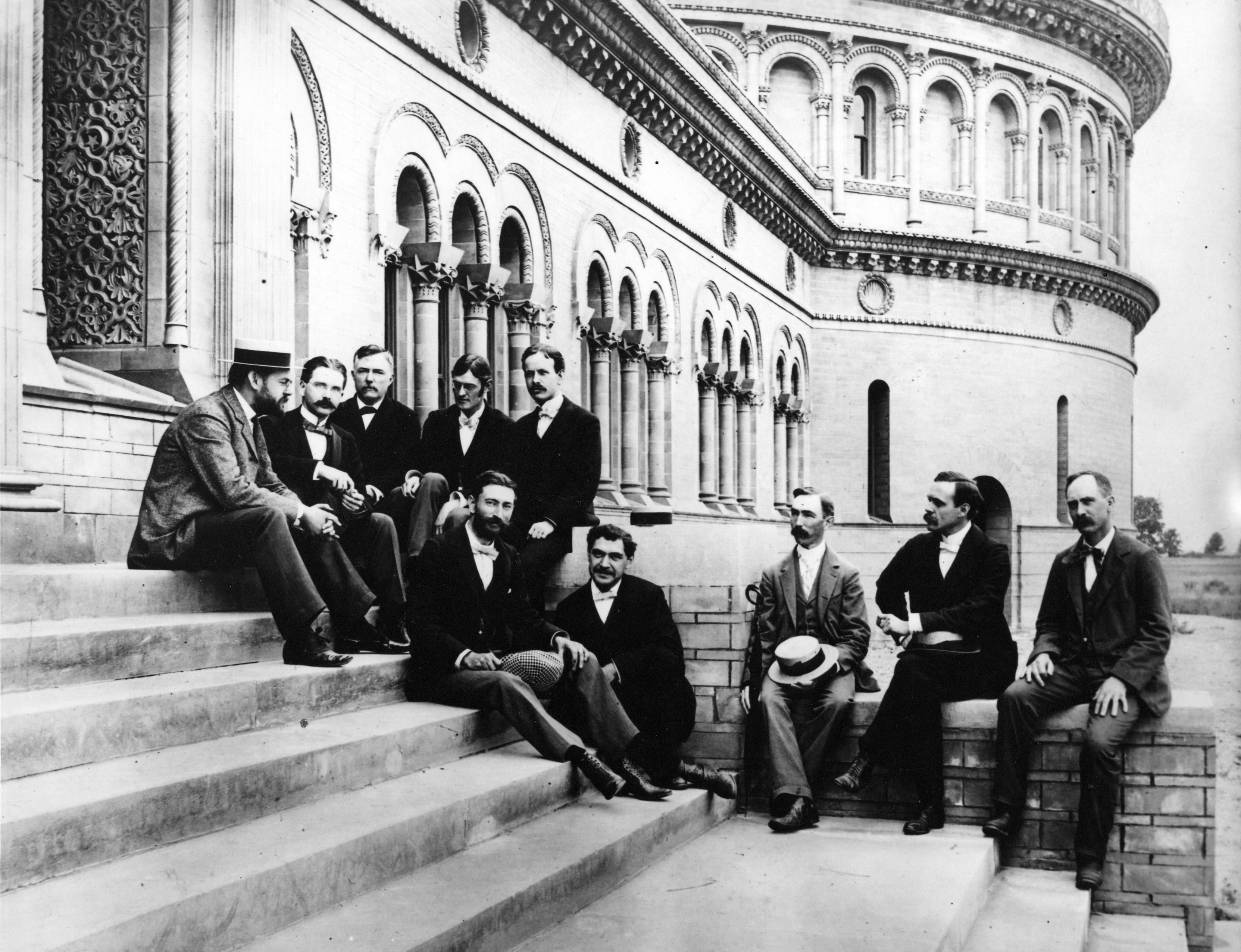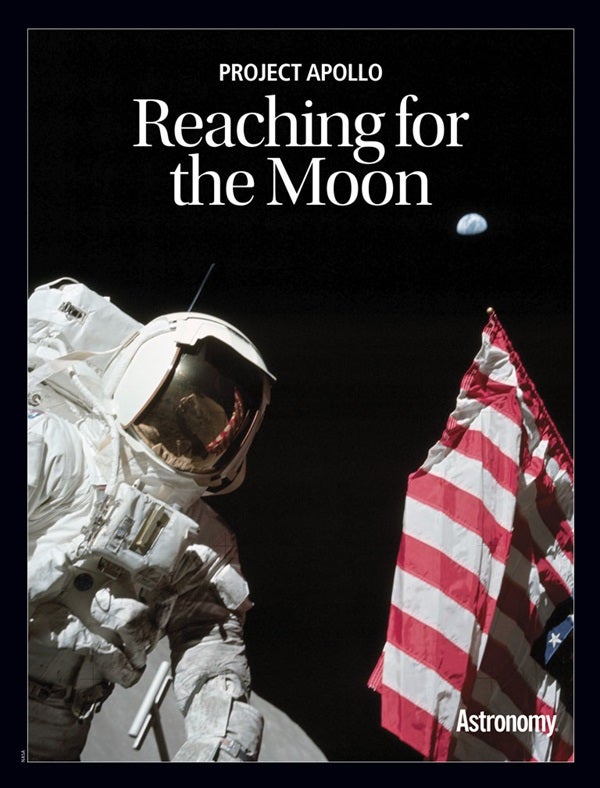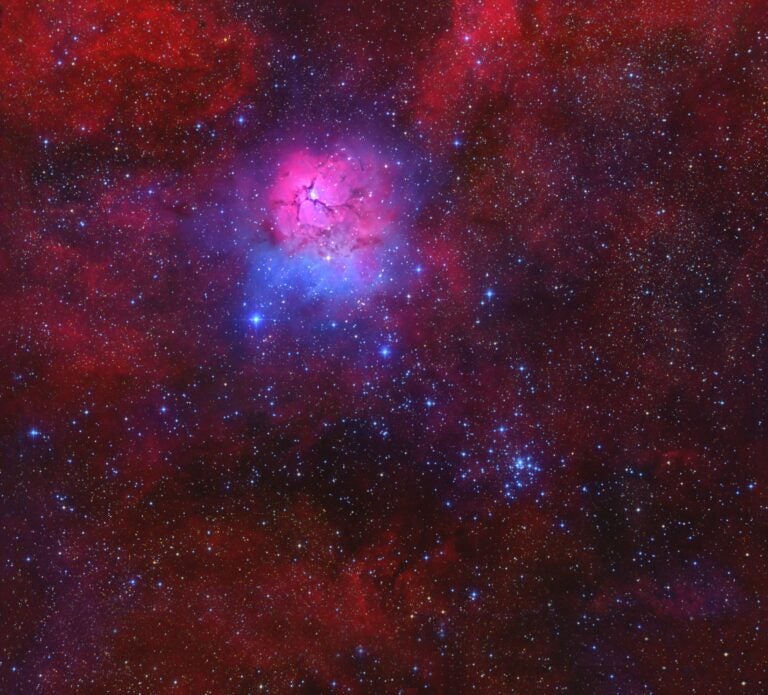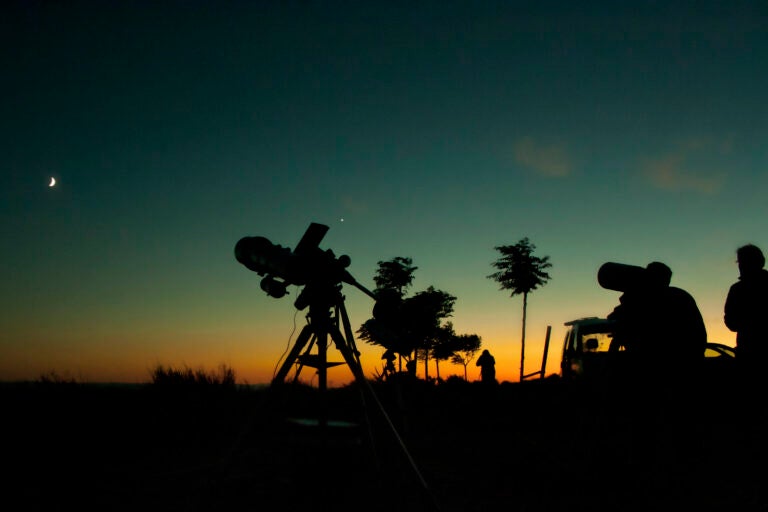

You can follow mankind’s journey to the lunar surface in our free downloadable eBook: Project Apollo: Reaching for the Moon.
A long legacy
Ritchey died in November 1945 at age 80. The 40-inch Naval Observatory telescope, now the ancestor of all large modern research telescopes, was moved in 1955 to a more optimal location near Lowell Observatory in Flagstaff, Arizona. There, the likes of John S. Hall and Arthur Hoag exploited its superior resolving capability. The second large Ritchey-Chrétien reflector, the 84-inch telescope at Kitt Peak National Observatory, was completed in the spring of 1960, half a century after the first seed of the idea took root in the fertile mind of its creator. From there, the Ritchey-Chrétien system swept the world.Ritchey was probably the greatest visionary telescope maker of all time. In addition to the Ritchey-Chrétien telescope, his ideas included cellular mirrors, lightweight mirrors that respond rapidly to temperature changes, internal dome temperature control, thermal distortion-reducing telescope mountings, and making rapid focus changes to optimize fluctuating seeing conditions. These concepts have now been used in nearly every large land-based and space telescope since the completion of the 200-inch Hale reflector – the last to use a parabolic primary mirror – at Palomar Mountain in 1948. The groundbreaking and historic Hubble Space Telescope, as well as future supergiants like the Thirty Meter Telescope in Hawaii, employ Ritchey-Chrétien systems.
Had he been able to suppress his desire and ambition, and fallen in line during the 100-inch telescope’s development in the 1910s, Ritchey might have had the opportunity to develop his “new curves” system in smaller telescopes first, working out the kinks along the way. In such a world, the Hale Telescope could have been the first large Ritchey-Chrétien telescope. This would have benefited Hubble, Walter Baade, Allan Sandage, and other cosmologists. But Ritchey’s insubordination and Hale’s ignorance sealed the 200-inch’s fate 30 years before it was completed.By contrast, Chrétien, who died in 1956 at age 77, was highly regarded during his lifetime and rewarded handsomely for his contributions to the field of optics. In addition to his Academy Award and Prix Janssen medal, he received the Valz Prize from the French Academy of Sciences. The American Astronomical Society’s Chrétien International Research Grant, which was created in 1982 to award up to $20,000 each year in support of international observational astronomy, was named in his honor.
Ritchey never lived to see his optical and instrument designs “proclaim the glory of God,” as he frequently wrote. Instead, his final years were spent writing draft after draft of books about the astronomical equipment he dreamed would one day convey the true nature of the heavens. The fact that he was never able to find a publisher for these volumes was perhaps the final insult in a life dedicated to designing the most advanced astronomical equipment ever conceived. His legacy is written in the incredible cosmological advancements his signature telescope design has allowed and will continue to generate well into the future.Both Ritchey and Chrétien attempted several times to earn a contract to build a Ritchey-Chrétien telescope, either in Europe or the U.S. But fears over the effectiveness of the mirror configuration – fomented as they were by Hale and others – and Ritchey’s own beleaguered reputation scuttled these attempts as larger and more reputable firms earned contracts for proven telescope configurations.
It was the U.S. Naval Observatory that finally gave Ritchey the opportunity to build a Ritchey-Chrétien telescope sized to show off its finer attributes. In 1930, Ritchey returned to the U.S.; soon after, the Naval Observatory commissioned a 40-inch Ritchey-Chrétien reflector by the aging telescope maker. The French were more than happy to bid him adieu.Ritchey’s entire career in France had yielded only a 0.5-meter Ritchey-Chrétien telescope mounted on a wooden frame. The 40-inch telescope he designed and built for the Naval Observatory, which went into service in 1935, was Ritchey’s masterpiece, nearly 25 years in the making. The only trouble was that it had been built and installed on the observatory grounds in Washington, D.C. Imagine the Mona Lisa hanging on the wall of a barbershop. The site just wasn’t very good.Just over 100 years ago, on October 31, 1919, George Willis Ritchey was fired from the Mount Wilson Observatory and ostracized by the American astronomical community. This dramatic event would ultimately set back by 50 years the development of the Ritchey-Chrétien telescope – the advanced optical system used in today’s best research telescopes.
A fastidious man
Ritchey, the son and grandson of Irish immigrant furniture makers, had been trained in the art and craft of fine furniture design and construction. But he later discovered a love of optics – especially telescope optics – instrument design, and astrophotography. By the early 1900s, Ritchey had established himself as one of the world’s leaders in shaping, polishing, and testing optics for use in telescopes.
Meticulous and methodical to a fault, Ritchey was also imperious and demanding of his shop assistants. He was one of the first to introduce standards for shop protocols: varnishing the walls and ceilings, keeping the floor wet during polishing, double sealing windows, and using air filtration systems to help eliminate dust. He developed most of the techniques he used for polishing and testing mirrors through years of careful work and detailed note-taking. His 1904 paper for the Smithsonian Institution, “On the Modern Reflecting Telescope, and the Making and Testing of Optical Mirrors,” had become a must-read for any aspiring telescope optician. In it, Ritchey detailed the process by which he shaped a glass disk into a perfect section of a sphere and set about creating the curved shape for the mirror.One of those inspired by Ritchey’s writing was Henri Chrétien – a French astronomer, physicist, and optical engineer. Chrétien came to Mount Wilson as a visiting researcher from the Nice Observatory in France in 1909. There he met Ritchey, and the two worked on direct photography with Mount Wilson’s newly completed 60-inch telescope. Chrétien was a brilliant optician in his own right and was impressed by the incredible performance and optics of the telescope, which was Ritchey’s latest and greatest achievement. Ritchey was equally impressed with Chrétien’s knowledge, skill, and creativity as an engineer. This mutual respect and admiration led them to correspond regularly after Chrétien’s return to Paris a year later.
New curves
At about that time, Ritchey was designing the 100-inch Hooker Telescope at Mount Wilson, which he and the observatory’s director, George Ellery Hale, assumed would employ a paraboloidal primary mirror with an array of flat, parabolic, and hyperbolic secondary mirrors.
But while comparing photos taken with the 60-inch reflector, which had a parabolic primary mirror, Ritchey noticed that the images taken using a hyperbolic secondary mirror at the Cassegrain focus were sharper than those taken with the same mirror at either the Newtonian or prime focus. The longer focal ratio of the scope’s Cassegrain focus reduced comatic aberration, or coma. (Focal ratio is a telescope’s focal length divided by the size of its aperture; smaller focal ratios are considered faster.)Meanwhile, Ritchey continued to assert that the telescope ought to be a Ritchey-Chrétien system, rather than the standard parabolic Cassegrain system. As he, Hale, and Adams argued over the proper design, Ritchey, who had befriended Hooker and gained his confidence, quietly made his case in no uncertain terms. He had come to the opinion that Hale and Adams had no idea what they were talking about.Hale later learned of Ritchey’s circumvention of his authority and promptly demoted him from lead on the 100-inch project, relegating him to the optical shop where he would remain until the 100-inch primary mirror was finished, polished, and tested for use in the telescope. The highly persuasive director then convinced Hooker that the original parabolic design was perfect for his new telescope. Hale’s reputation as a scientist, instrument designer, and observatory builder doomed Ritchey, who lacked the poise and power of persuasion of the Mount Wilson director. Hooker soon relented and died not long after, leaving Ritchey to his fate. He had bitten the hand that fed him and his days at Mount Wilson were numbered.
When Ritchey was forced to depart Mount Wilson in the fall of 1919 – just as the likes of Edwin Hubble and Milton Humason were beginning highly profitable associations with the organization – he was determined to create his own telescope-building company.00-inch telescope would not be upstaged by any newly designed creation, especially one by their disgraced former associate. Hale used his position as observatory director to set about ruining Ritchey’s reputation.
Soon, Ritchey realized he would never again work in any capacity in astronomy in the U.S. His ego, his arrogance, and his willful insubordination over the 100-inch had gotten him censured from astronomical work in the country.
A new start
Fortunately, Ritchey had friends in Europe. Five years after leaving Mount Wilson, he sailed for France at the invitation of Chrétien and the Paris Observatory, who were planning a 104-inch telescope. By this time, Chrétien was a professor at the Institut d’Optique and beginning development of the hypergonar lens system, which won him an Academy Award of Merit at the 26th Academy Awards after it was used to create the CinemaScope widescreen film process. (He is the only astronomer to win an Academy Award.)
The French astronomical community anxiously awaited the arrival of the visionary optician and instrument maker. On April 8, 1924 – about a week after his arrival in Paris – Ritchey was awarded the Janssen Medal by the French Academy of Sciences for his work on astronomical instruments. It was an auspicious beginning, but relations soured from there.The Paris telescope’s benefactor, Assan Farid Dina, thought the design should employ the same paraboloidal primary mirror as its slightly smaller cousin in California, while Chrétien (and others) were eager to design it as the first large Ritchey-Chrétien telescope. Inexplicably, after some deliberation, Ritchey decided on a 5- or 6-meter (197 to 236 inches) telescope, incorporating his newly patented cellular primary mirror design as a Ritchey-Chrétien hyperboloid.The telescope was never built. Long on vision, ambition, and skill, but short on tact, charisma, and charm, the 59-year-old Ritchey began slowly to break down the welcome extended to him by the French astronomical community. He never bothered to learn French and failed as a project manager and planner, bouncing from one position to the next as his colleagues tried in vain to find a position that suited his incredible talent, but would rein in his budget-sapping ambition and perfectionism.
Coma affects all parabolic mirrors by stretching a star’s image as the object moves off-axis. The image may be perfect at the center of the field, but closer to the edge, it becomes distorted. This necessarily limits the size of high-quality pictures taken using parabolic systems.Ritchey wondered whether a more refined hyperboloid secondary mirror might reduce – or perhaps even eliminate – coma altogether. He wrote to Chrétien in Paris to see if he could come up with a workable solution mathematically. Chrétien determined that a highly specialized hyperboloid primary and secondary mirror, one concave (curved inward) and the other convex (curved outward), could reduce coma to zero.When he received the news, Ritchey was delighted at the possibilities their “new curves” represented and began to conceive of the 100-inch telescope as the world’s first “Ritchey-Chrétien” telescope. An instrument of this type would create perfect images everywhere without the need for a collimating lens, which then-current reflectors required to “flatten” the view they produced for better image quality. The telescope’s Cassegrain setup would make possible a primary mirror with a fast focal ratio, reducing the length of the telescope’s tube. This would give the telescope a more compact profile, enabling a smaller dome and a compact, lighter frame and mounting system, thus lowering overall building costs. The idea was as ingenious as it was prescient.
Old vs. new
Ritchey immediately set about trying to convince Hale and Mount Wilson assistant director Walter Adams that the 100-inch should use the new curves – a move that would ultimately prove to be Ritchey’s undoing.
By 1910, the 100-inch project was woefully behind schedule and over budget. With funds from the trust created by hardware magnate John D. Hooker, for whom the telescope was named, running out, and Hooker’s increased anxiety and frustration at the delays, Hale went into emergency mode.









